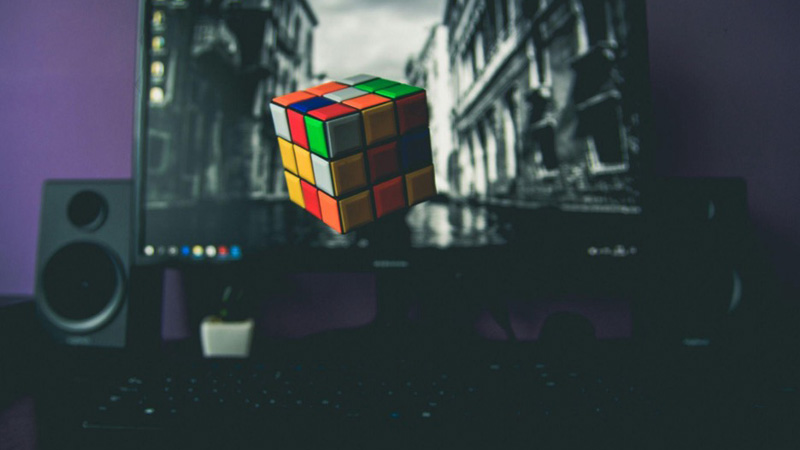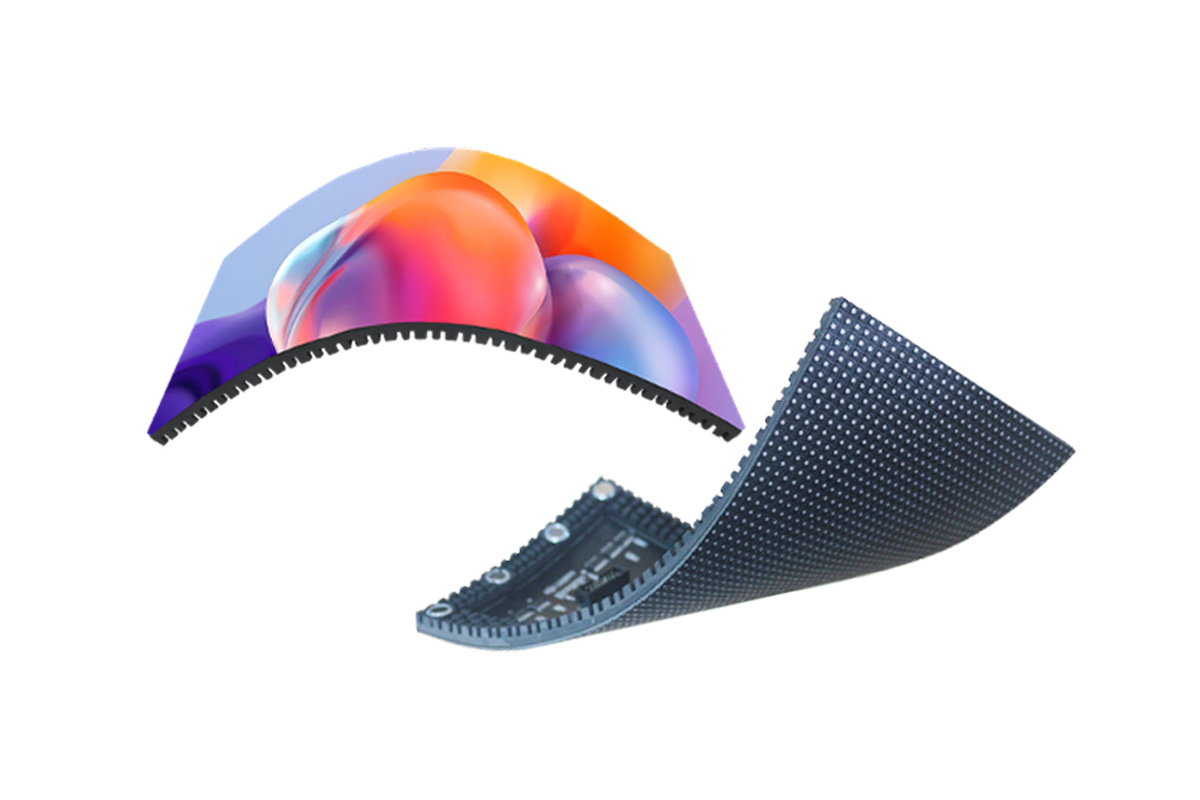LED vs. OLED Displays: Comprehensive Comparison 2024
Two types of display technology have drawn the most attention from customers. It has changed how we see and experience visual content on our screens. These two display technologies are LED and OLED.
OLED and LED displays each offer unique characteristics that appeal to different preferences. From a range of vibrant colors and strong contrast to reduced power consumption and flexibility. This article aims to offer you a complete understanding of the differences between OLED and LED. Whether you’re a tech geek, content creator, or simply looking to improve your display, this comparison guide will clear any confusion surrounding these displays.
1. Understanding LED Display Technologies
Those box televisions are long gone, and we were given LCD display technology. They ruled the world of display technology for some time till technology decided to take things up a notch. Giving rise to LED display technology. This type of display technology took the world by storm and quickly gained popularity.
The term LED refers to Light light-emitting diode. These diodes are small light bulbs that are a part of most electronic equipment. For LEDs to work, these diodes allow current to pass through them generating the light. This process allows us to see visual content on screens. Now let us understand how diodes work!
The size of your LED screen determines how many diodes it requires. For example, a large-size LED display will require a higher number of diodes to illuminate the screen. These diodes are low-power devices that produce a high level of brightness. This is the main reason LED screens are in demand. They provide various advantages over traditional display options.
Older display technology used fluorescent lamps that could only produce black and white colors. LED panels, on the other hand, can display the complete color spectrum by mixing red, blue, and green.
Applications
There are various uses and applications of LED display technology. This guide will list down how they are used in different fields and their benefits.
Entertainment Purposes
LED displays are widely used in performances, cinemas, and concerts since they come in a variety of sizes and colors. They make any environment more attractive and engaging with the help of different lighting effects.
Lighting Purposes
LED screens are energy-efficient and are commonly used in street lighting. Not just that, LED displays can enhance events and functions through different lighting effects. They use a top-notch LED display to produce a vibrant and vivid image to captivate audiences.
Educational and Informational Purposes
LED panels are used to display animations showcasing history or scientific information, which improves learning quality. Teachers use LED screens to deliver interesting and interactive sessions.
LED displays are a great way to deliver basic information more interestingly. This allows students to understand subjects more effectively.
Professional Purposes
LED displays are ideal for big outdoor screens, such as billboards. High resolution and bright colors make them ideal for all types of professions including travelers and divers. It is also used for advertising purposes in sports centers or malls to showcase new products.
2. Understanding OLED Display Technologies
The term OLED refers to an Organic Light light-emitting diode. This display technology uses a thin organic material allowing current to pass through, producing light.
OLEDs are thin, lightweight, and may be designed to be flexible. They consist of organic layers. OLEDs use these materials because it allows them to be translucent or transparent, depending on how they are constructed. This material emits color unlike LED screens, which rely on backlight technology.
OLED technology has a higher contrast ratio than LEDs along with an energy-efficient screen. Interestingly, power usage is related to the number of illuminated pixels. Thus, the user interface of this display screen has a significant influence on battery life.
Unlike conventional displays, OLED screens do not require backlighting since they generate light when power is supplied. The OLED display is known for faster refresh rates, high response rates, and high-quality image colors.
Applications
There are various uses and applications of OLED display technology. This guide will list down how they are used in different fields and their benefits.
Automobile Industry
OLDE screens can be folded and bent, allowing automobile manufacturers to create unique and attractive designs. This display technology has a high contrast ratio that allows drivers to see accurately from the automobile dashboard screen.
Household Purposes
The OLED display serves as lighting for ovens, fridges, and microwaves. These screens are also used to show real-time information on washing machines such as the options and timer.
Smartphones
OLEDs are versatile, low profile, and energy efficient, making them suitable for tablets and smartphones. This allows you to use your phone or laptop even in darkness. The deep blacks of OLED panels give users a brilliant watching experience by improving screen brightness.
Television
Most screens make dark scenes in movies difficult to watch, ruining the movie experience. OLED screens solve this problem by making dark scenes in movies clear and bright, enhancing the experience. The wide viewing angles of OLED scenes make it perfect for movies that have a wide frame, maintaining picture quality.
3. What Are the Similarities Between LED And OLED Displays?
So far, we have been comparing both display technologies, but little did we know that both share some similarities as well.
Energy Efficiency
LED and OLED displays consume less energy compared to typical displays, making them more eco-friendly.
Picture Resolution
OLED and LED provide great visual quality, with high brightness, colors, and saturation that represent colors effectively and authentically.
High Response Rate
OLED and LED displays have high response rates, resulting in sharp images with no blurriness. This quick reaction time is ideal for fast-paced and high-octane gaming.
Applications
LED and OLED screens use displays to showcase video or picture content, such as games, movies, and ads.
Flexible and Slim
OLED and LED displays are flexible and slim, allowing for innovative design possibilities and applications such as different screen shapes and sizes.
![]() Energy Saving Display 30% Design
Energy Saving Display 30% Design
![]() Standard Modules Front/Rear Service
Standard Modules Front/Rear Service
![]() Standard Size: 500×250/1000*1000mm
Standard Size: 500×250/1000*1000mm
![]() Display Can Operate at -20°C to 60°C
Display Can Operate at -20°C to 60°C
4. What Differentiates OLED And LED Display Technologies?
LED screens are more common despite OLED panels providing greater visuals because of their higher picture quality. OLED technology is emissive, but LED/LCD technology is transmissive. Hence, the technologies operate differently. Some of their key differences are listed below.
Durability
LED displays provide greater durability and a longer lifespan. The backlight, which is separated from the pixels, protects them from wearing out. As a result, LED displays endure longer before experiencing any visual distortion.
On the other hand, OLED displays are more susceptible to burn-in due to their thin and delicate design. This occurs when pictures on the screen remain constant for a longer period, leaving ghost images. This is a rare situation but still, LED displays win this fight.
Screen Heating
OLED panels release fewer emissions since they do not require backlights. While the screen is in use, each pixel lights up. And while not in use, it remains off. As a result, the screen temperature is reduced, and overall display technology remains cool.
On the other hand, LED screens generate greater amounts of heat than OLED displays due to their backlight. This causes the pixels to get hotter since they are working continuously to generate visual content.
Displaying Color
OLED displays create brilliant black-and-white colors, resulting in an unlimited contrast since each pixel emits light. This display provides a compelling and realistic visual experience.
LED displays have vibrant colors and accuracy. However, the quality varies depending on the display technology.
View
OLED panels have superior viewing angles with less brightness or color distortions when seen from different angles. On the other hand, LED displays provide high color contrast and accuracy when seen from various angles.
Production Costs
OLED screens are more expensive due to superior technology and ever-changing features. Additionally, they have a slower speed and production than LED screens. LED displays, on the other hand, are less expensive due to outdated technology and enormous production numbers. Resulting in a lower cost of production.
| LED | OLED | |
Durability |
More durability because the backlight is separated from the pixel. | Less durable and has a higher chance of burn-in because of its thin design. |
Screen Heating |
Susceptible to heat because they require a backlight which generates heat when used for longer periods. | Not susceptible to heat because they do not require backlights. |
Displaying Color |
Accurate color and clarity enhance image quality. | Unlimited contrast gives a realistic visual experience. |
View |
LED displays provide high color contrast and accuracy when seen from various angles. | OLED panels have superior viewing angles with less brightness or color distortions when seen from different angles. |
Production Costs |
LED screens are less expensive due to outdated technology and enormous production numbers. | OLED screens are more expensive due to superior technology and ever-changing features. |
![]() Strong Adsorption Capacity
Strong Adsorption Capacity
![]() Flat and Resilient Surface
Flat and Resilient Surface
![]() Easy Creative Installations
Easy Creative Installations
![]() Customizable Design Capabilities
Customizable Design Capabilities
5. Which Display Technology is Better for Businesses?
The decision depends on the company’s display requirements and the available area for installation. For example, an LED display can be used for video conferences or other work-related tasks. It is less expensive and produces high-quality images compared to an OLED panel.
On the other hand, if the company needs content for marketing or advertising purposes, an OLED display is a good choice since it has higher picture quality and versatility.
One more thing if you need content for an extended time, LED displays are ideal. Its durability makes it suitable for use in the hotel lobby, menus, or at the desk.
LED displays are suitable for huge crowds at trade exhibitions, outdoor gatherings, events, and competitions. They may show video, text, high-quality graphics, and photographs. They can withstand severe temperatures and hence are appropriate for outdoor activities.
OLED displays are ideal for indoor events requiring high-quality graphics, photos, or video displays. Indoor events include exhibitions, product launches, art displays, and conferences. They provide excellent image clarity, color contrast, and precision, making them ideal for smaller crowds.
6. Premium Range of Indoor Display
Want to replace your LED with a higher-quality one? This one will blow your mind. It features a high-quality standard module that comes with smart settings, storage, temperature management, and more.
It delivers high-quality content and represents colors accurately. Along with various benefits, this LED stands out with its energy-saving feature.
The decision depends on demand. OLED displays have greater visual quality due to their unlimited contrast ratios and capacity to generate black screens. Customers also prefer this due to its fast reaction time maintaining picture quality.
On the other hand, LED displays are more long-lasting and robust than OLED displays. Making them more suited for gamers who will be using their screens for a long time. LED screens are also ideal for gamers who employ static user interfaces since they are less prone to burn-in.
Contact
 Building D, Hongfa Science Park,
Building D, Hongfa Science Park,
2035 Songbai Road, Shiyan, Bao’an District, Shenzhen, Guangdong, China.







